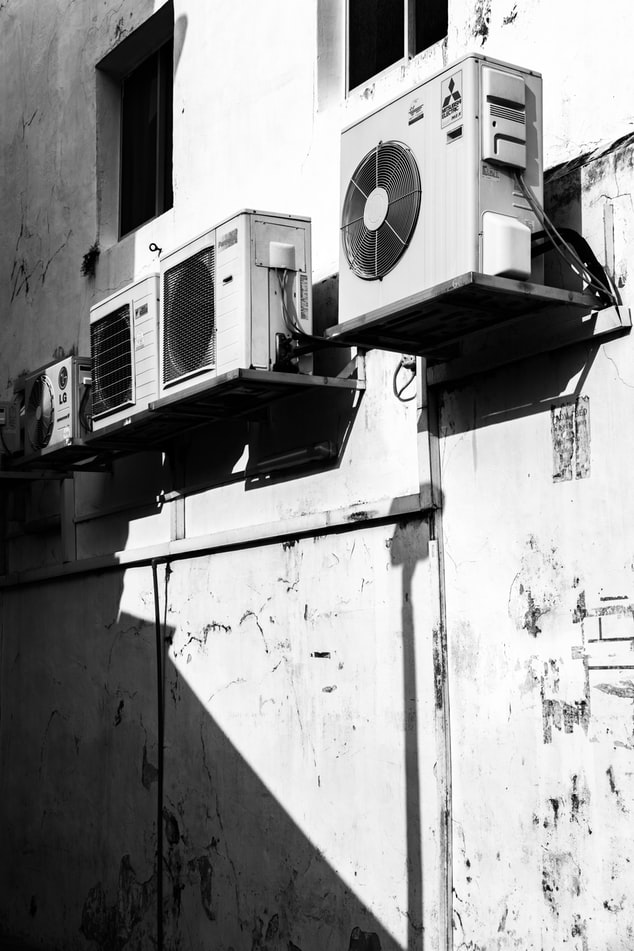Air conditioning is on the rise, but it is often being questioned for its impact on our health and the environment. Is it dangerous and should we be wary of it?
An air conditioner can release refrigerants that are responsible for the increase in greenhouse gases. Indeed, these fluids have a strong warming power evaluated by the GWP (Global Warming Potential). To avoid refrigerant emissions into the air, it is important to carry out a proper installation and regular leak tests. In itself, an air conditioning circuit is closed, so no emissions.
Air conditioning creates a vicious circle, called an urban heat island found in large cities. As temperatures increase, so does the use of air conditioning; but the more you use it, the more heat you release into the atmosphere with the HVAC systems. To remedy this, large cities use centralized air conditioning systems that release heat onto water loops.
Good to know: Air conditioners are very energy-intensive. Your bill can increase by 20 to 25% for a surface area of 45 m² during the summer period.
Prohibition of CFC and HCFC Refrigerants

CFCs (chlorofluorocarbons) and HCFCs (hydrochlorofluorocarbons) have been very popular in the refrigeration industry, particularly as refrigerants, in air conditioning systems as they are:
non-flammable;
not expensive: about $2 a barrel;
have a good capacity for resistance;
don’t degrade;
don’t damage the installations;
and have a liquefaction facility.
On the other hand, these two types of fluids contained chlorine, which is responsible for the hole in the ozone layer. They have therefore all been phased out by the Montreal Protocol.
New Refrigerant Gases for Air Conditioning

Manufacturers are now concerned about the environment and are helping to reduce waste and the environmental impact of air conditioners, thanks to new refrigerant gases. Fluids (HFCs) whose actions on the greenhouse effect are 2088 times greater than CO2 are about to be banned soon. They are currently subject to a quota system limiting their use. To meet HFC restrictions, manufacturers mix fluids to reduce their impact on global warming. In air conditioning, the fluid currently used is R32, it has a greenhouse effect 3 times lower than R410A but more than 600 times higher than CO2.
New Refrigerants of the Hfo Type (Hydrofluoroolefin)
They have no impact on the ozone layer and have a low greenhouse effect. They have a performance equivalent to the previous fluids and they are slightly flammable.
Hydrocarbons:
- are called natural;
- have no impact on the ozone layer and a low greenhouse effect;
- are already present in domestic and professional refrigerators;
- are flammable.
Ammonia (NH-3 or R-17):
- is said to be natural;
- is an excellent refrigerant;
- is toxic and flammable;
Despite all these, it remains in the industrial sector because it has no impact on the ozone layer or greenhouse effect.
Carbon Dioxide (CO2):
It is said to be natural;

It is neither toxic nor flammable;
It has no impact on the ozone layer and a low greenhouse effect;
It has a high operating pressure;
Its use involves special air conditioning compressors and is becoming increasingly popular in the food processing industry.
Ecological Air Conditioning
To keep your mind at ease about the environment, you should know that there are totally ecological air conditioning systems.
There are two main ones:
– Solar air conditioning
– Bio-air conditioning
Solar air conditioning uses the principle of sorption. A natural refrigerant (often ammonia) is mixed with water to absorb and reject heat. This system operates without a compressor, there is only one electricity consumption for two circulators (very low consumption). Compression is called thermal instead of mechanical and is achieved by using solar panels.
Bio-air conditioning, also known as evaporative air cooler (EVAC)
The evaporation of water is a natural cooling medium, identical to perspiration for humans. The water on the skin evaporates by absorbing the body’s heat. The same principle is used by bio-climate. Water is injected into a media, a fan creates an airflow that passes through the media to charge itself with moisture, thus cooling the air that is injected into the room.
Want to know more about the environment? Visit myplanetblog.com.


1 thought on “Air Conditioning and Ecology: An Overview of the Different Air Conditioning Gases”